THE PHILIPPINES: 2-WEEK ITINERARY ITINERARY AND TRAVEL GUIDE
Traveling to The Philippines for the first time? It can be overwhelming piecing together an itinerary. After all, there are (technically) more than 7,000 islands in this part of Southeast Asia, and the list of Pinterest-worthy beaches, sandbars, dive sites, waterfalls, lagoons and rice terraces is never-ending. To help, I’ve pieced together a guide to five of my favorite areas of the country that offer a nice variety of everything iconic to The Philippines – Bohol, Panglao, Siquijor, Banaue and El Nido. While it’s possible to complete this itinerary in a little over two weeks, I suggest adding few extra days in the destinations you’re most excited about, for a more relaxed trip. In the guide below I’ve included itinerary ideas, travel tips, resorts, restaurants, transportation details and more.
This post contains affiliate links. When you click these links I may get a small commission that won’t cost you anything, but it does help me run this website.
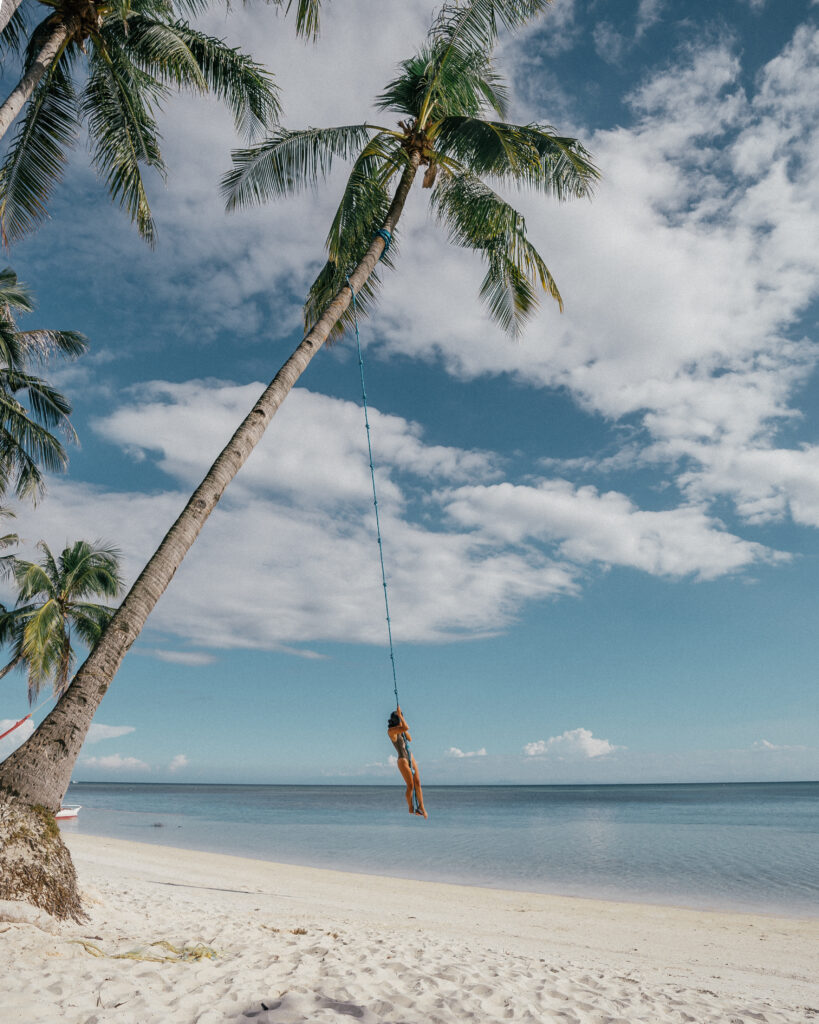
Views over the dreamy islands of Palawan, the The Philippines.
PHILIPPINES TRAVEL TIPS
- CURRENCY – The official currency of The Philippines is the Philippine Peso. While several businesses accept credit card, it’s important to also have cash handy, especially when island hopping.
- eTRAVEL PHILIPPINES – The Philippines Travel Information System (eTravel) is required for foreign travelers arriving and departing The Philippines. If you are British citizen, eTravel Philippines is an easy place to apply for the pass prior to your trip.
- WHEN TO VISIT – Dry season in The Philippines is November to April. The best time of the year to visit is December through February before the scorching temperatures hit in April and May. Wet season lasts June through October.
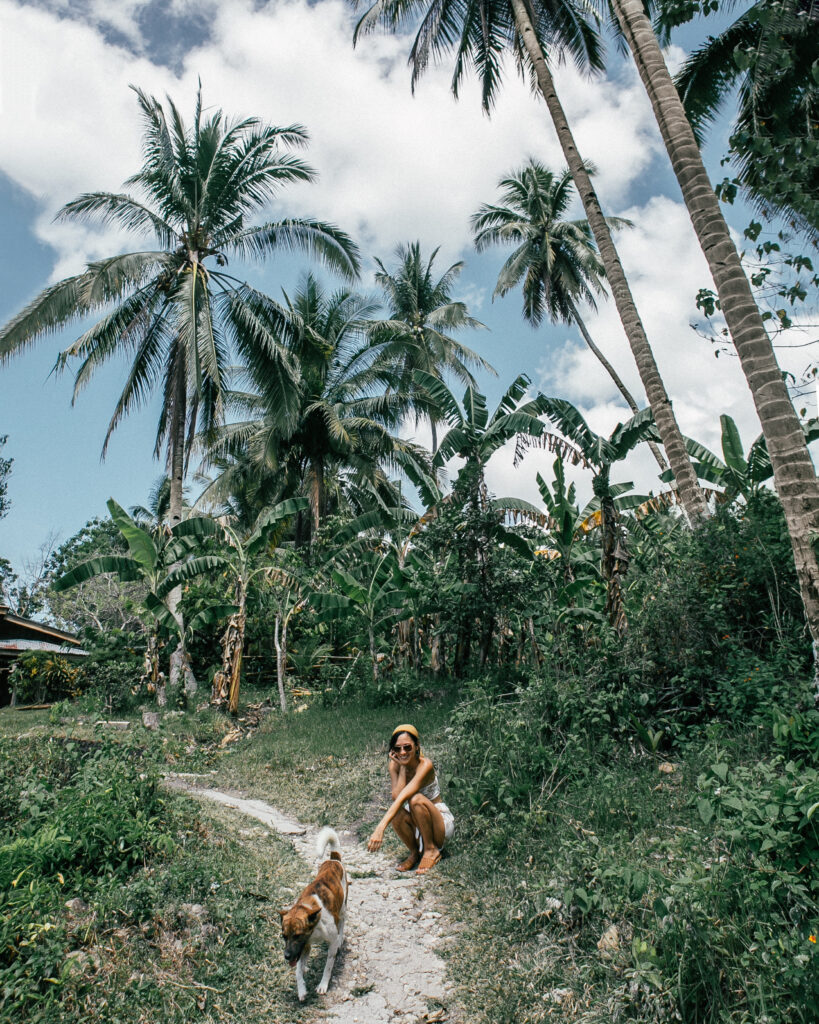
Making friends in the islands.
BOHOL & PANGLAO
itinerary | days 1-4
Bohol and Panglao are two islands located in the Central Visayas. They can be visited as a stand alone trip (there’s lots to see and do), or as part of an island hopping itinerary to neighboring Siquijor and Cebu. A small bridge connects Bohol and Panglao, making it very easy for tourists to explore both islands. Between the two there are plenty of beaches, waterfalls, caves, sandbars, offshore islands, dive sites, chocolate hills and resorts to fill a weeklong stay. I suggest staying at least three nights before moving onward to Siquijor by ferry.
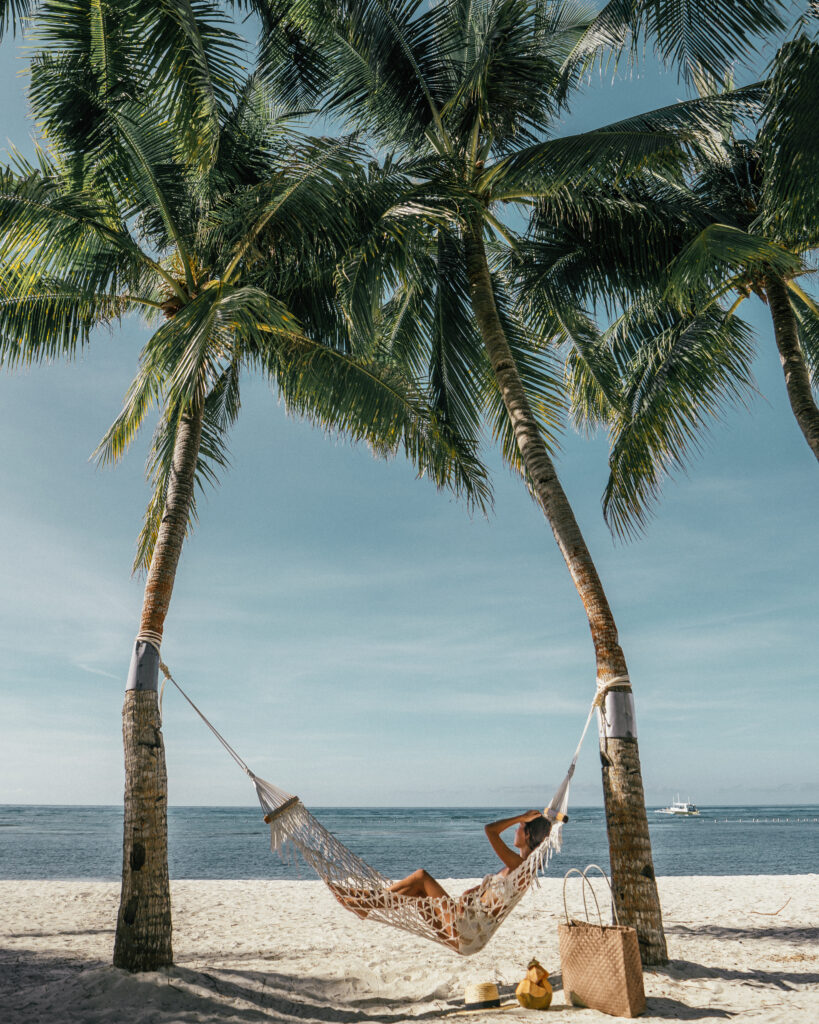
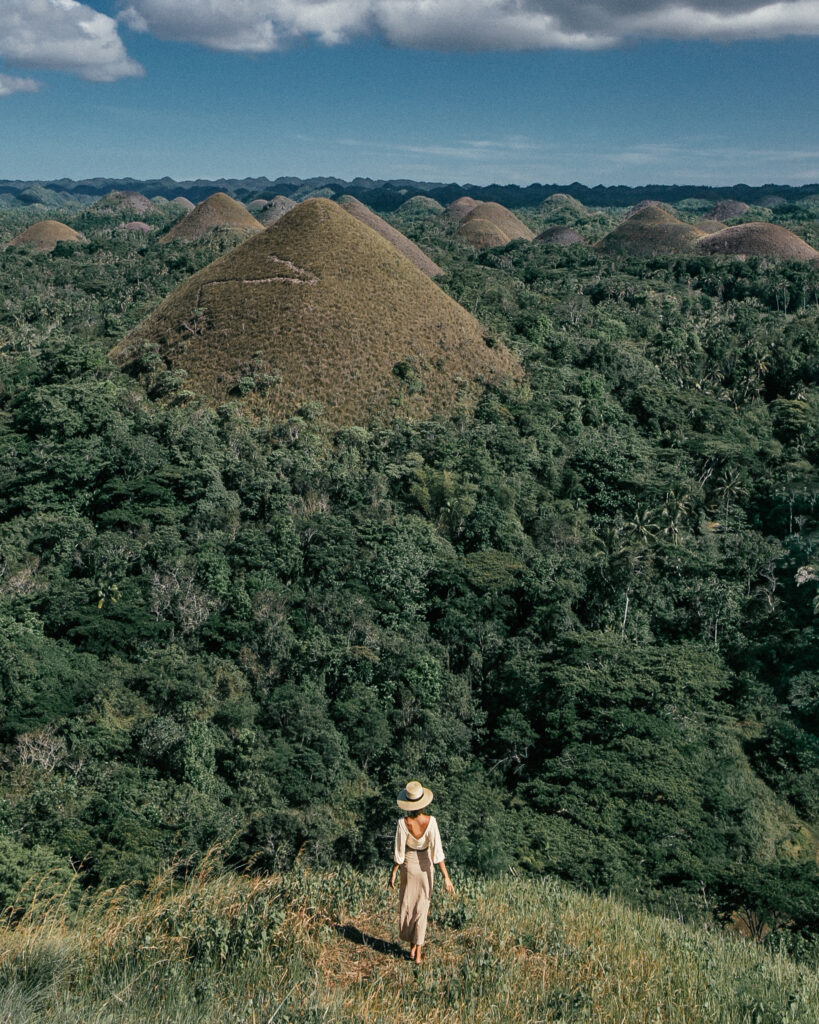
EXPLORE BOHOL & PANGLAO
ALONA BEACH
For anyone staying on Panglao, you’ll likely spend a lot of time on Alona Beach. It’s the heart of the island – a tourist hub home to dive shops, restaurants, tour agencies and hotels. It’s also a completely gorgeous place to chill – sunbathing during the day in the calm turquoise waters, or soaking in the island vibes at night along the beach’s main drag.
BALICASAG ISLAND
Ah, one of the prettiest dive sites in The Philippines. It’s a 20-minute boat journey from Alona Beach to reach the offshore reefs of Balicasag, and most dive shops offer half-day dive trips for ridiculously cheap prices. I booked our two-tank trip with Philippine Fun Divers based on the positive reviews on TripAdvisor. The dive masters were rockstars, and the conditions were absolutely perfect – warm water, insane visibility, colorful coral and so much to see – blue starfish, green sea turtles, eels, clownfish, vibrant schools, trumpet fish, nudis, the list goes on.
While I loved diving the reefs, I’m not a fan of visiting the actual island. Balicasag is a very small, and its beaches have been completely overrun by tour companies that use the beaches as a lunch/snorkel stop for boat tours.
BOHOL BEACH CLUB PALM GROVE
If you’re able to get a day pass, this beach club is home to one of the prettiest palm groves on the island, several adorned with picture perfect white hammocks. It’s a 15-minute drive from Alona Beach, but I suggest calling ahead of time. If the resort is fully booked they will not let outside guests on the property.
THE CHOCOLATE HILLS
Bohol is home to more than 1,200 of these iconic geological wonders – cone shaped hills covered in green grass that turn brown in dry season (i.e. chocolate hills). The Chocolate Hills can be seen from several places around the island, but unfortunately it’s the tourist complex in Carmen has some of the best views. The place is completely overrun with people (this is a bucket list destination in The Philippines), so I suggest visiting early to avoid the overwhelming crowds.
HINAGDANAN CAVE
Not the most spectacular cave in the world, but worth a visit for anyone staying on Panglao, as it’s easy and convenient. Parking is available right at the entrance, and then it’s a short climb down into the large cavern filled with a beautiful blue lagoon, stalactites and stalagmites. The cave is dark, but sunlight does shine in through small cavern holes in the ceilings. We visited in the late afternoon and it wasn’t busy at all – I was the only person in the water with the lagoon to myself.
INGKUMHAN FALLS
This was the first stop on our daytrip to Bohol, and for us a complete waste of time. The waterfall pool was brown, and the place wasn’t very scenic. We spent all of 10 minutes here and then left.
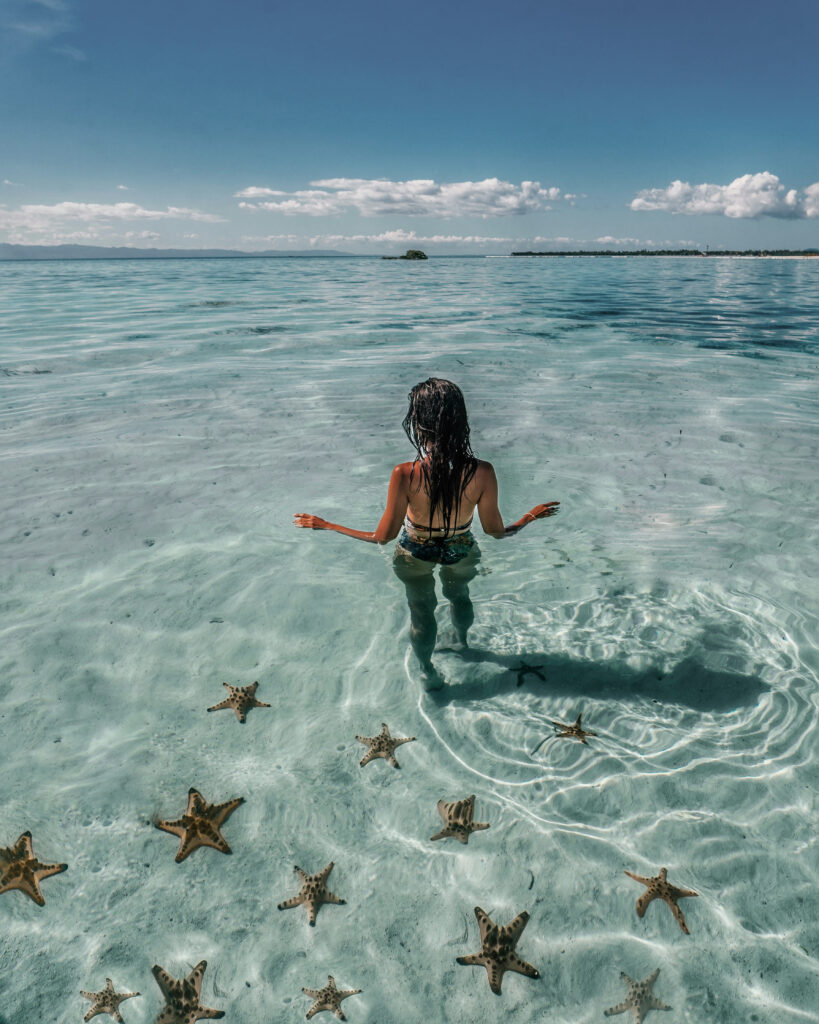
Island life in The Philippines.
WHERE TO STAY ON BOHOL & PANGLAO
Amorita Resort sits perched on a hill over sweeping views of Alona Beach. The resort is home to 98 rooms, restaurants, two infinity pools, a wellness spa and dive shop. The one bedroom suites are completely spacious retreats that house a living room, dining table, oversized restroom and king bed in the master bedroom. Beautiful resort, and the location cannot be beat.
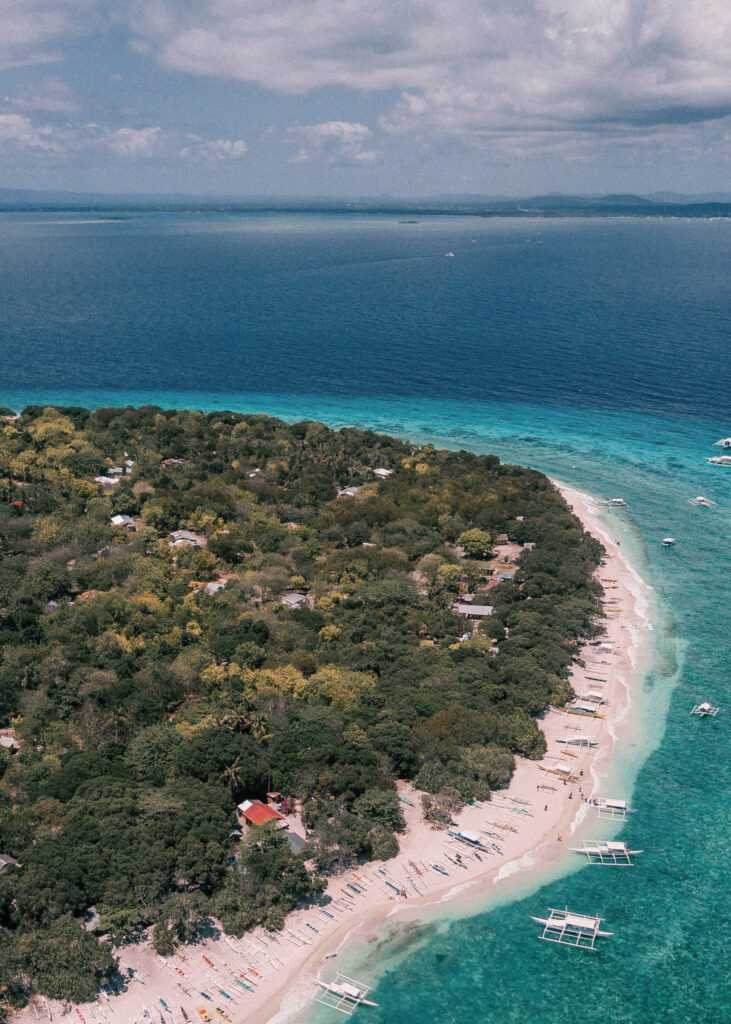
Dive trip over to Balicisag Island.
GET AROUND BOHOL & PANGLAO
There are several transport options available on both Panglao and Bohol. Tourist can rent motorcycles and motor scooters – this is probably the cheapest and most flexible option. For short distances around Panglao, motor taxis are cheap, plentiful and pretty efficient. And for longer daytrips, it’s best to hire a private van and driver. Most of the tourist agencies on Alona Beach can arrange private transport, and the pricing is completely dependent on bargaining skills. We hired our driver through an agency and paid approximately $80 USD for 10 hours of driving, and that included a tip for the driver.
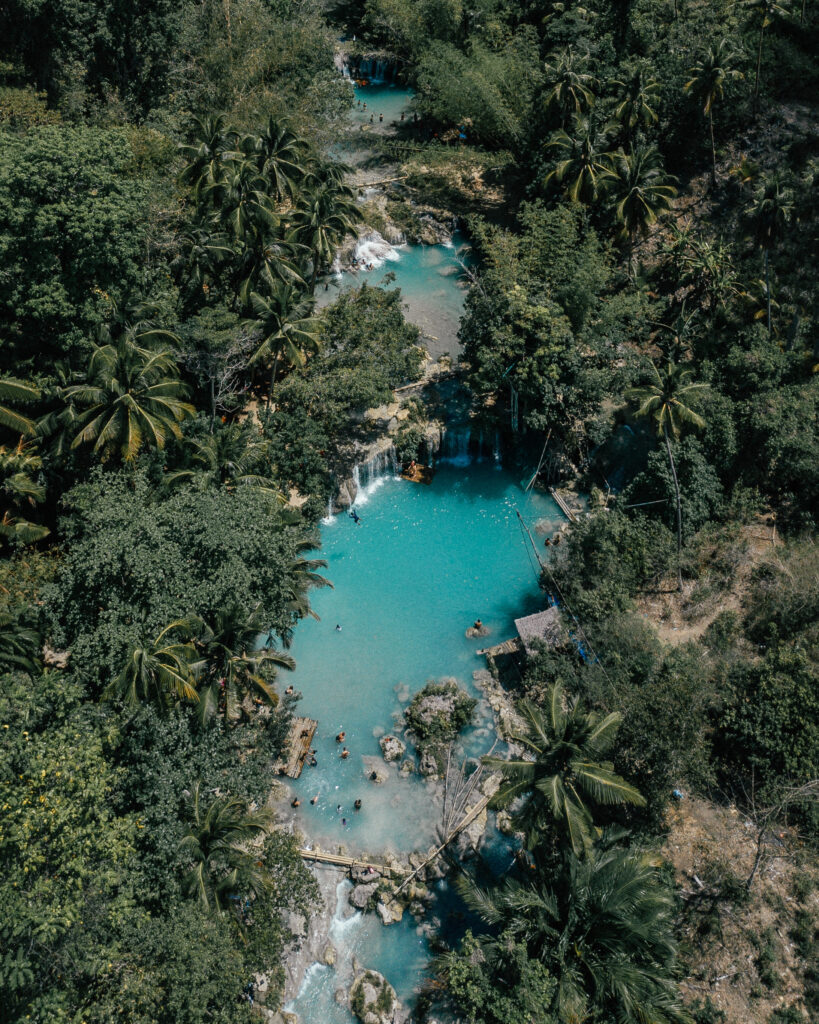
Cambugahay Falls.
SIQUIJOR
itinerary | days 5-8
Siquijor is an absolute gem, one of my favorites in The Philippines. A tiny island in the southern Visayas, this is my favorite destination in The Philippines. It’s an island only accessible ferry, so it makes sense to visit before or after a stay on Cebu or Bohol. We visited after Bohol, and it was a welcome change of pace. The main tourists spots on the island can get busy, but compared to other islands I’ve visited, Siquijor is pretty quiet. We spent three nights on the island, but I recommend staying at least five. Our short stay was enough time to see the island’s best beaches, palm swing, waterfalls and sunset spots, but left very little time to relax and move at a slow pace.
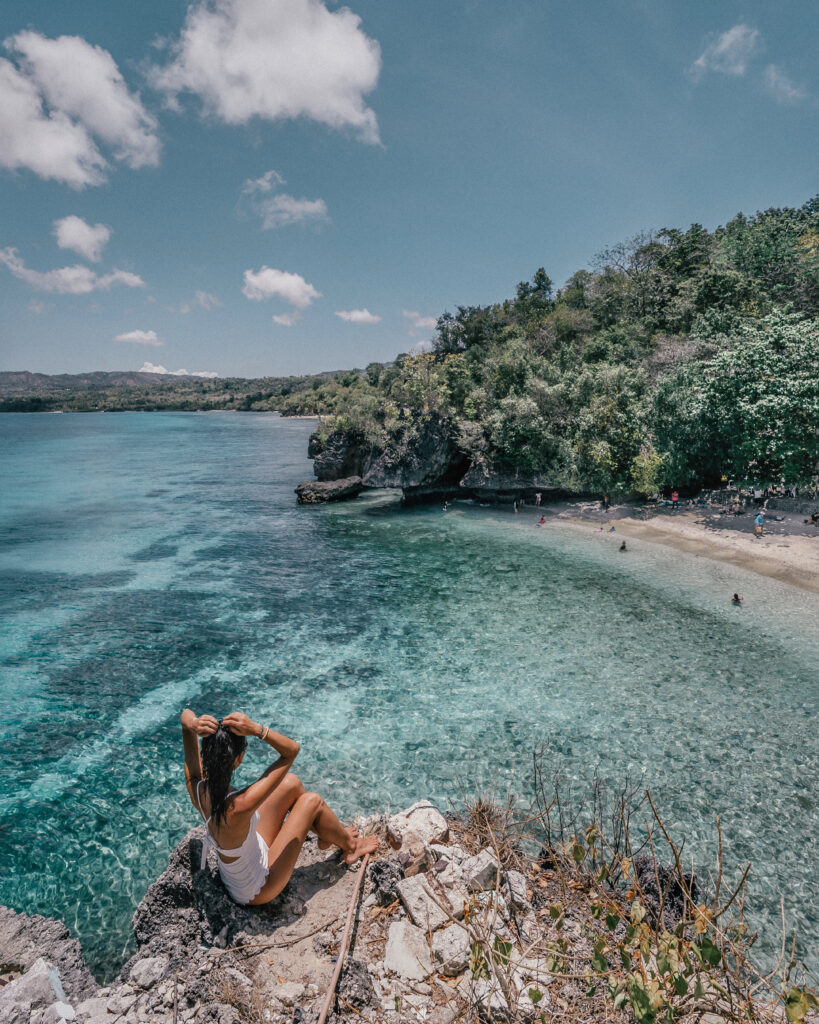
Salagdoong Beach – my favorite beach on the island!
EXPLORE SIQUIJOR
CAMBUGAHAY FALLS
Visit early morning because the falls are a popular swimming hole for both locals and backpackers. Similar to some of the other famous blue waterfalls in Southeast Asia, these falls are tiered creating several different pools that can be explored by swimming or bamboo raft.
CORAL CAY PALM TREE SWING
The palm hammock and rope swing on the beach at Coral Cay make this calm beach an absolute vibe. The setting is prettiest middle of the day when the sun is high, and the water is blue, but worth staying until sunset when the skies turn orange and pink.
SALAGDOONG BEACH
Located on the island’s west coast, Salagdoong is an absolute dream with calm water that literally sparkles midday when the sun is up. But what makes this beach particularly special are the cement platforms carved into the rock for cliff jumping. Even if you don’t jump, it’s fun to watch the local kids take the plunge, and worth a climb up just to see the water color from 20-35 feet above.
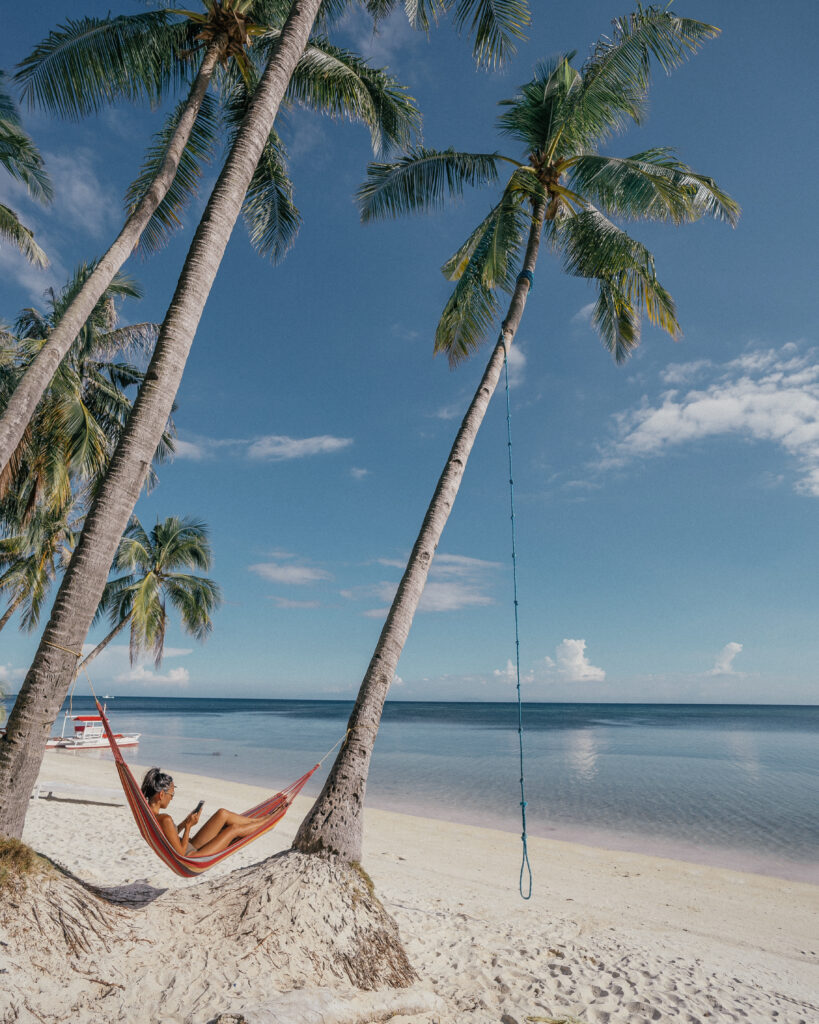
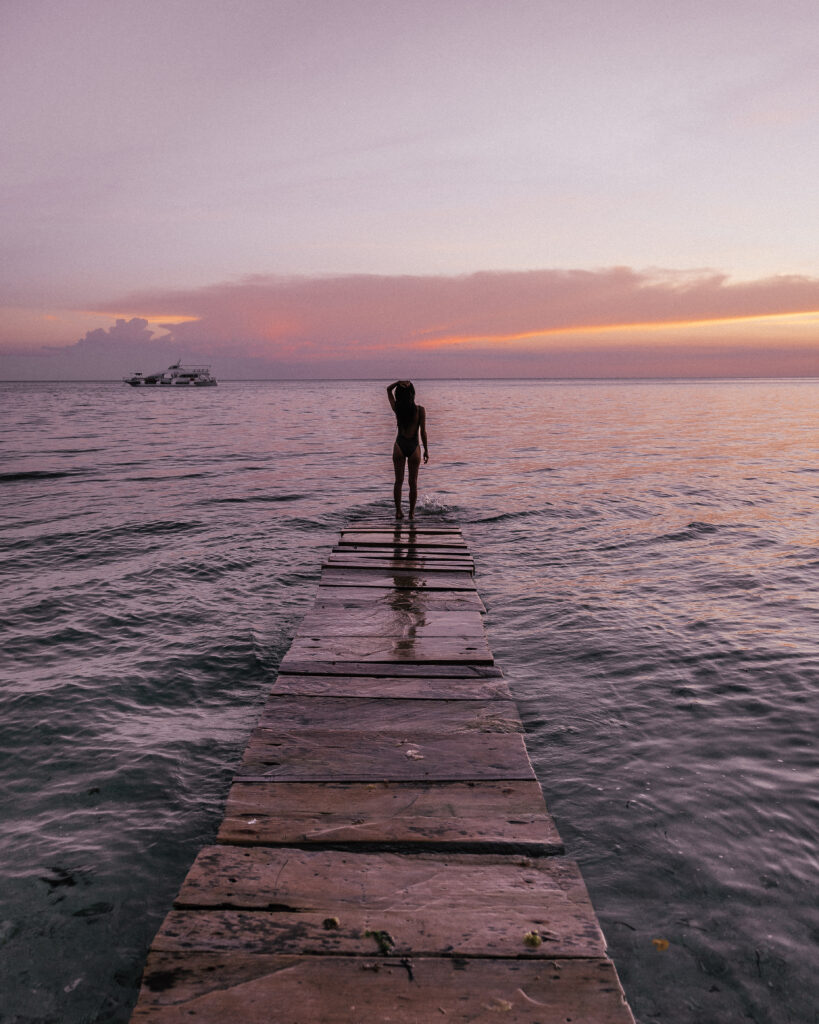
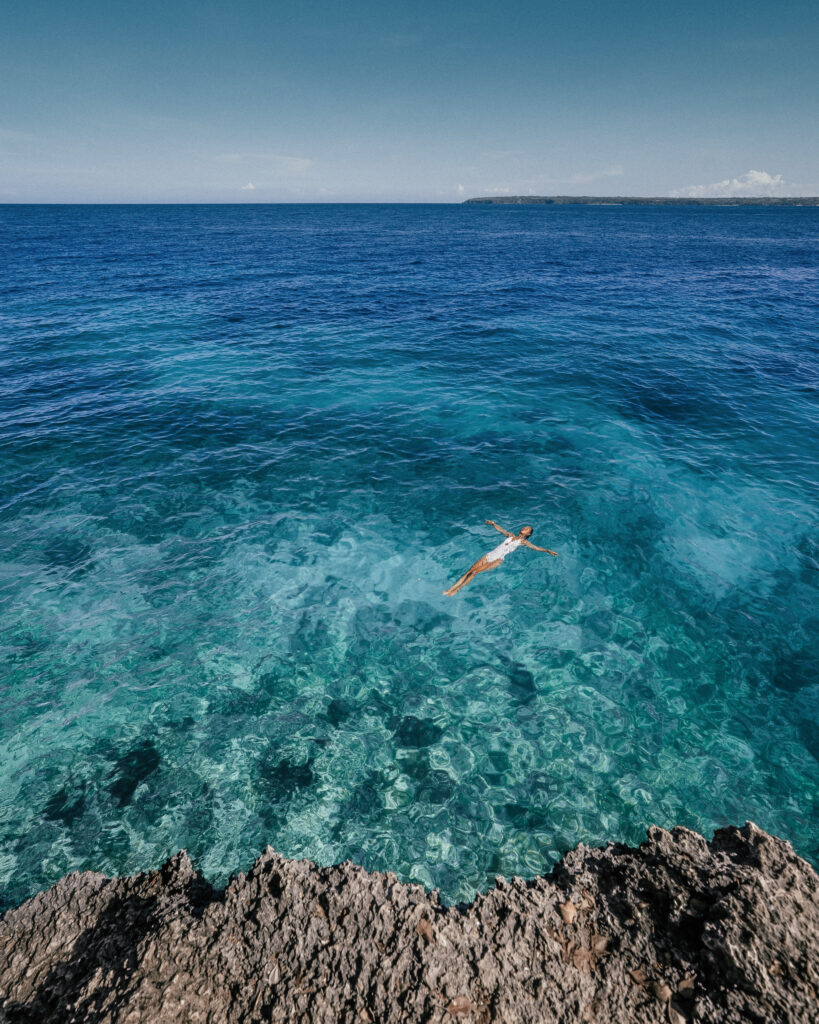
WHERE TO STAY ON SIQUIJOR
Nothing on Siquijor is truly upscale, but Coco Grove Beach Resort is the best of the bunch. One of the better reviewed hotels on the island, the property occupies a gorgeous stretch of beach on Siquijor’s southwest coast. Additionally, Salamandas Restaurant is the hotel’s beachfront restaurant, and it’s one of tastiest spots on the island for dinner.
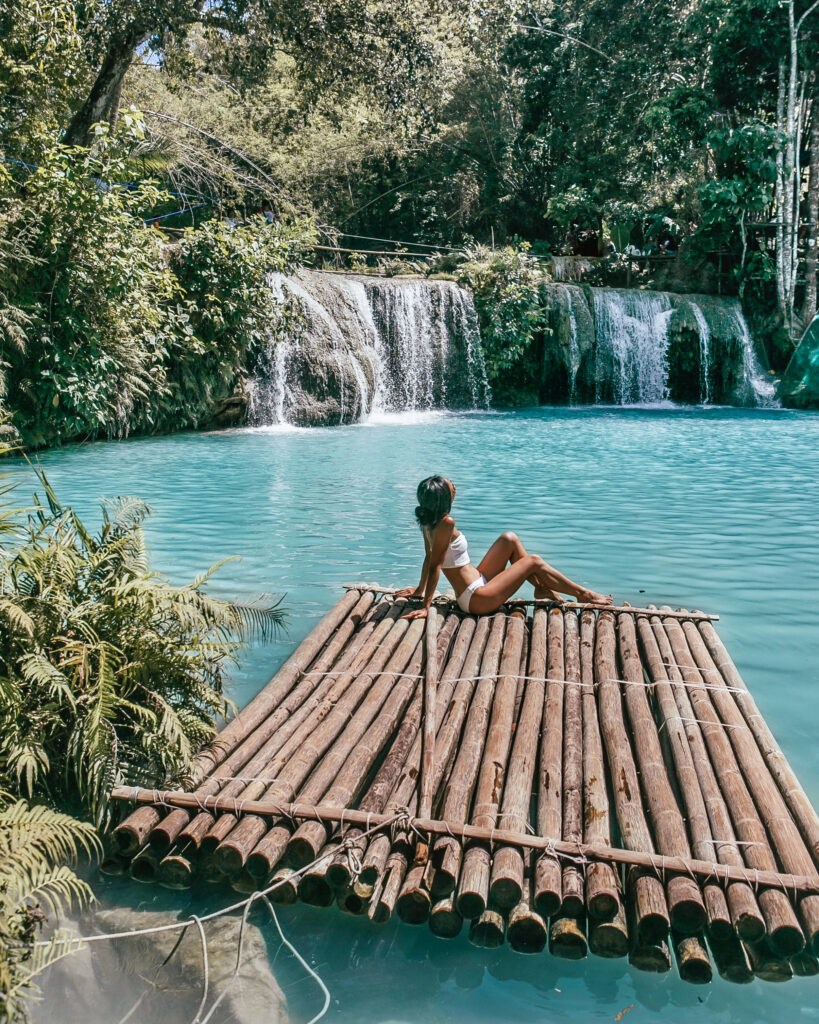
Waterfall adventures on Siquijor.
GET TO AND AROUND SIQUIJOR
A visit to Siquijor takes a bit more planning than other parts of The Philippines because there are no airports on the island. So while it’s more difficult to access, it leaves Siquijor less-touristed and off-the-beaten-path. The easiest way to get to and from is the ferry by way of Cebu or Bohol. We ferried in from Bohol, and then ferried out to Dumaguete-Sibular, where we caught a flight back to Manila. We flew Cebu Air, part of Value Alliance, the world’s first low cost carriers alliance in Asia Pacific that allow travelers to connect easily and find affordable fares through their booking website. DGT is not a heavily trafficked airport, so it’s important to check flight and ferry times to avoid an overnight in Dumaguete. Once on the island, there are motorized trikes and taxis available that can be booked for short distances, or a full day of sightseeing.
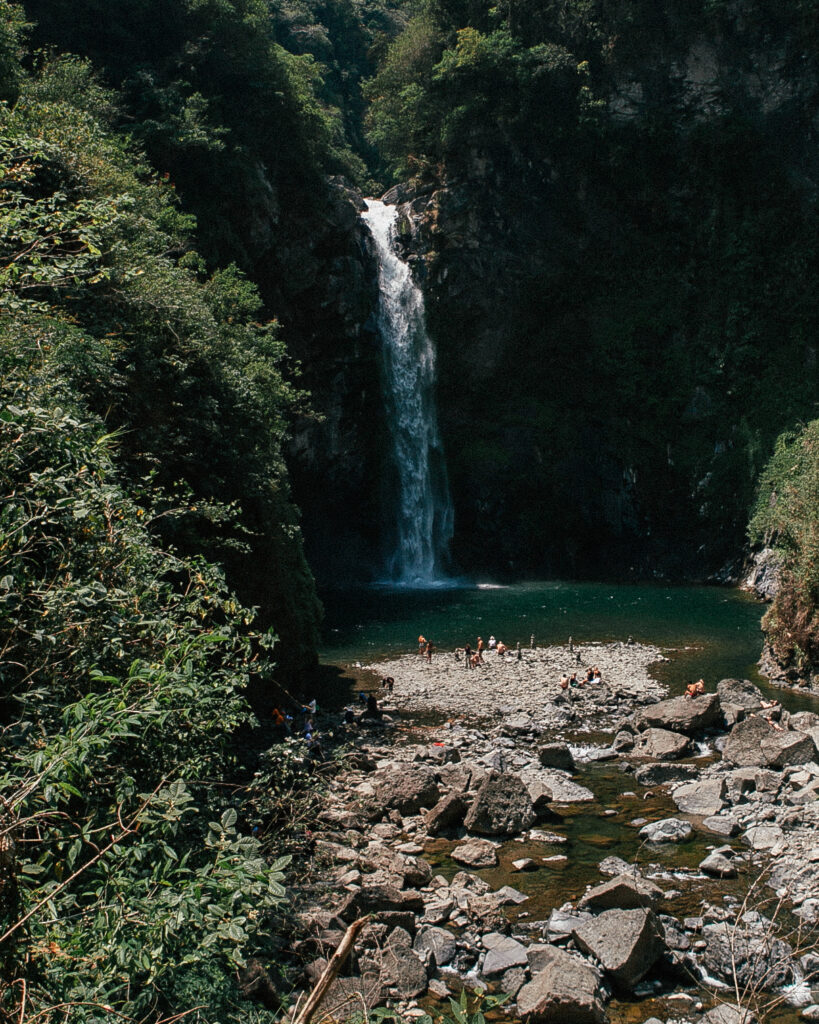
Tappiya Falls.
BANAUE
itinerary | days 9-12
It’s a bit of a journey to reach Banaue, but a refreshing change of pace if you’re able to include it in your itinerary. Most people do it as a two-day trip from Manila, while others stay longer to explore other regions of northern Luzon. Banaue sits in the Cordillera Mountains, a part of The Philippines where the air is clean, the views are green and life moves at a slower pace. It’s also home to the country’s iconic rice terraces, one of six UNESCO World Heritage Sites in The Philippines, and they’re some of the prettiest in Southeast Asia.
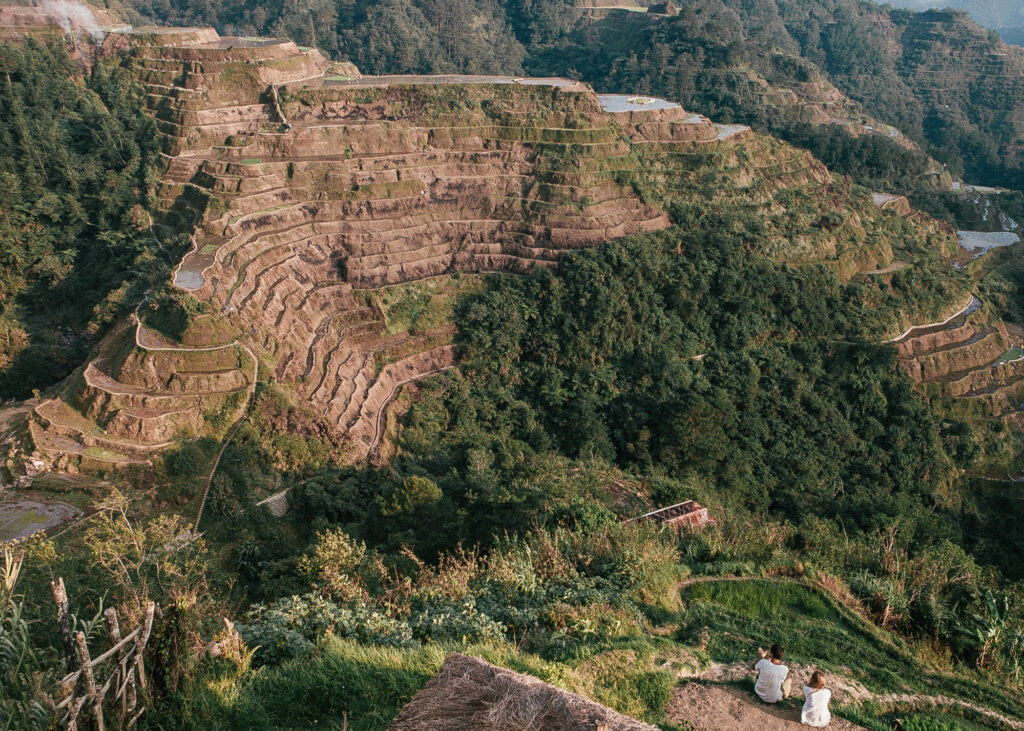
Tourists soaking in the rice terrace views in Banaue.
EXPLORE BANAUE
BANAUE RICE TERRACES
The rice terraces are the draw to this part of The Philippines, so spend plenty of time soaking in the views, whether it’s on foot or by motorized trike.
BATAD HIKE
Most visitors visit Batad as an overnight trip. The tiny village set in the rice fields is only accessible by hiking, so leave your luggage with your Banaue homestay and pack only essentials in a small backpack. It’s a one-hour Jeepney ride to reach The Saddle, the trailhead for the hike. If you’re only planning an overnight stay, I recommend starting this hike early, so you have a full afternoon to enjoy Batad. The trail down to the village is completely straightforward – there’s only one way in, making it impossible to get lost (no guide necessary). The downhill trek took us about two hours with stops.
Once in Batad, grab lunch at your homestay, and then spend the rest of the day hiking the surrounding region. The hike out of Batad is the same trail, but tougher because it’s an uphill climb. I suggest starting the hike early to avoid climbing in the heat. When you reach The Saddle, grab a fresh coconut or cold water at the little snack stall and hang out until a Jeepney shows up, and catch a ride back into town.
TAPPIYA FALLS
Jungle waterfall located next to the rice terraces in Batad. This place is a refreshing place for a dip after a hot hike down The Saddle.
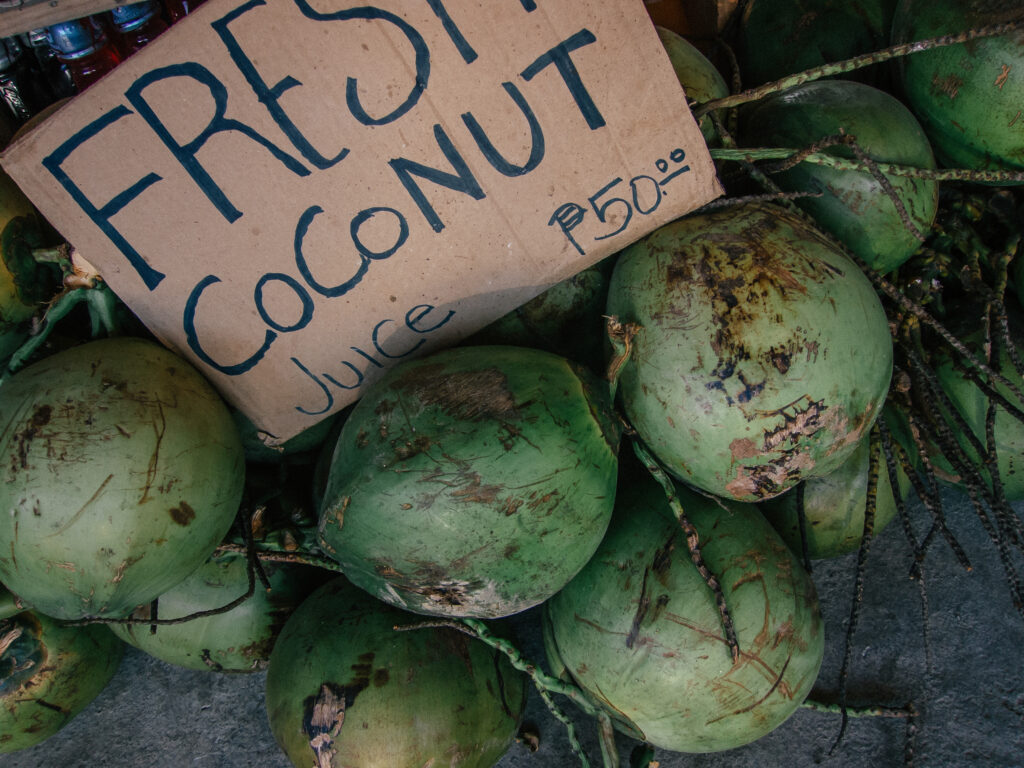
Fresh coconut is the best refreshment after a hike in the rice terraces.
STAY IN BANAUE
Both luxury and midrange lodging options are non-existent in Banaue and Batad. It’s a remote area of the country that sees only a handful of visitors, leaving you with a selection of rustic homestays, guesthouses and hostels. The options are all very similar – rooms consisting of two beds, and then a couple of shared bathrooms for all guests.
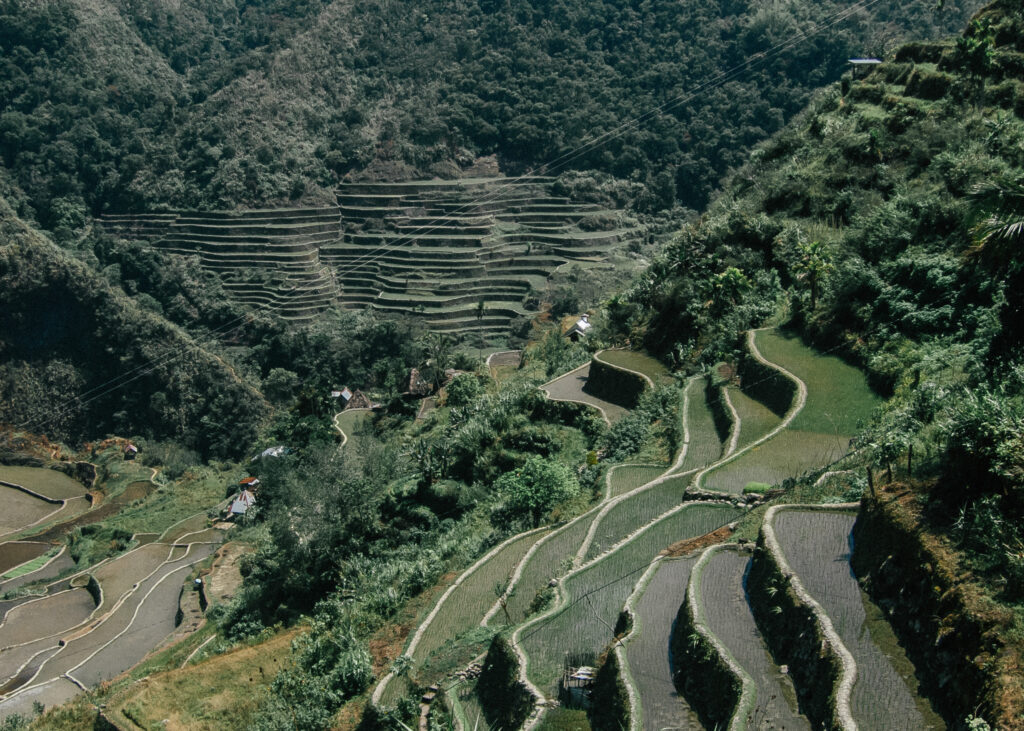
Lush green terraces spill down the cliffs in Batad.
GET TO AND AROND BANAUE
Banaue is not an easy destination to reach. It’s a 10-hour overnight bus ride from Manila to the town’s tiny bus station, departing at 7 PM and arriving just after sunrise the next morning. We booked our journey on Ohayami Trans – tickets were approximately $15 one-way. The buses are notorious for their raging AC, make sure to bring a sweatshirt (or blanket!) to make the experience a bit more comfortable. The return to Manila is via the same route, so make sure to stay long enough in north Luzon to make the journey worth it. Once in Banaue, motorized trikes and the open-air Jeepneys are the primary mode of transport.
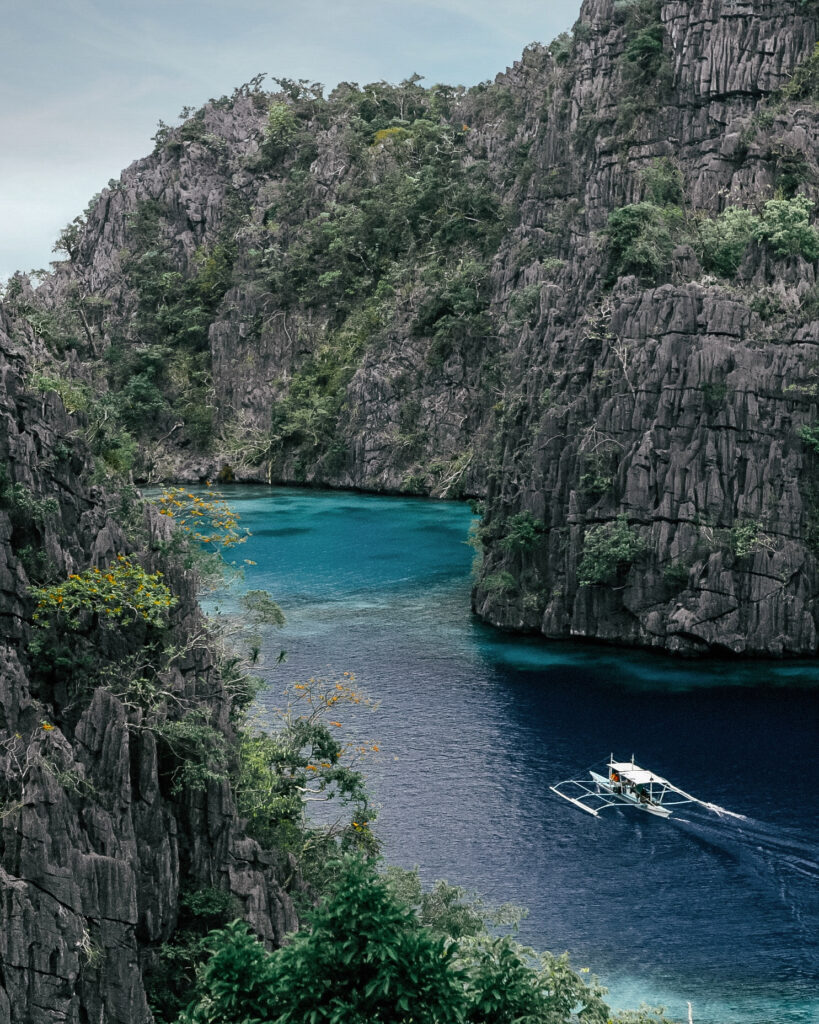
The iconic peaks of Palawan.
EL NIDO, PALAWAN
itinerary | days 13-16
First time visitors to Palawan usually have to decide between El Nido or Coron. The topography of the two is fairly similar, and it isn’t easy to move from between these two destinations. I’ve been to both, and while I prefer Coron, El Nido is a bit more off-the-beaten path because it’s the harder of the two to access. I suggest researching both destinations, and if Coron looks a bit more interesting, it can easily be swapped out here for days 13-16.
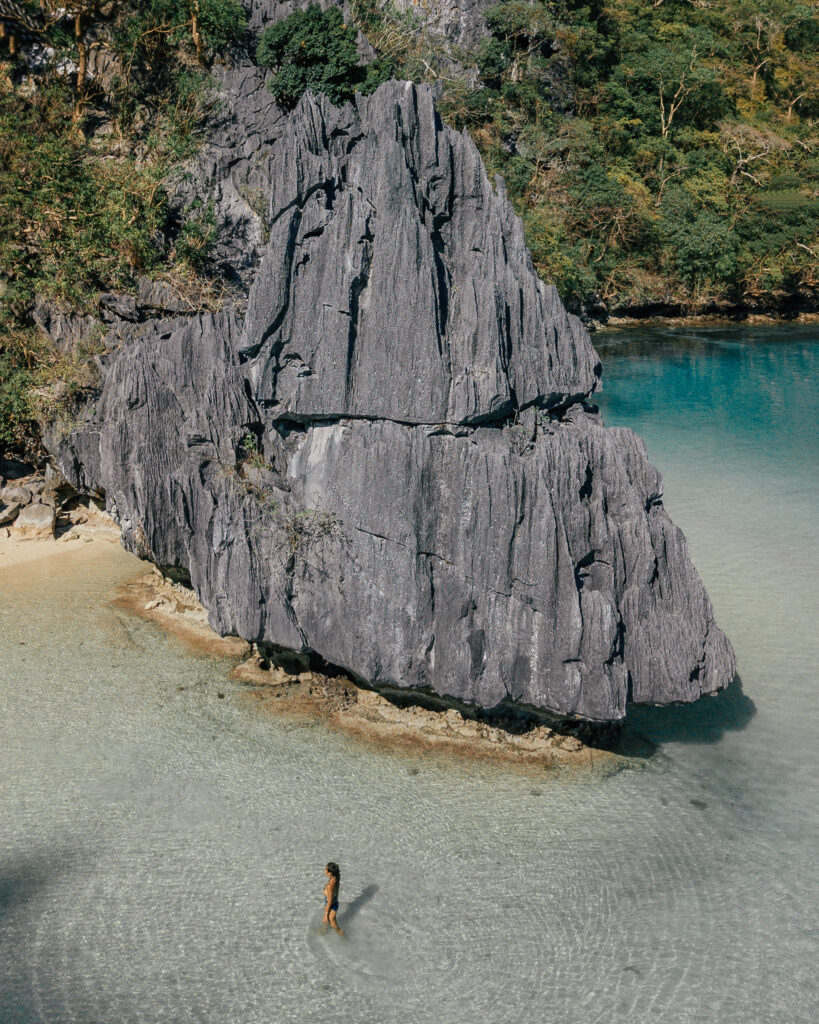
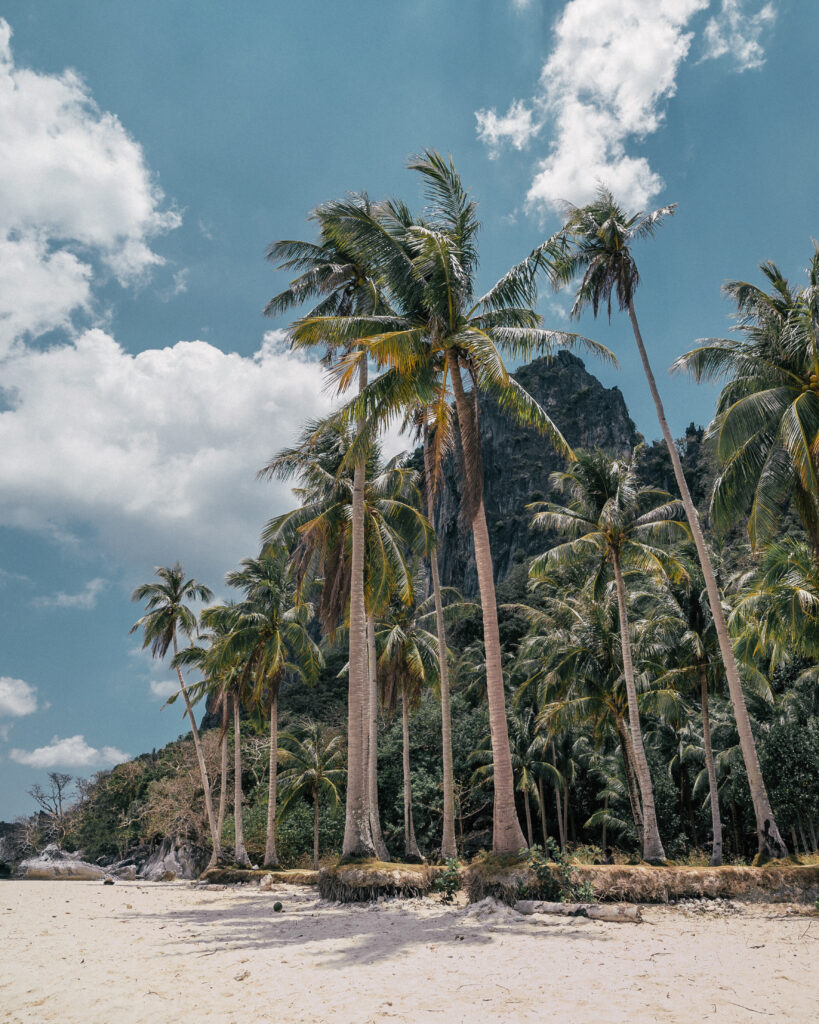
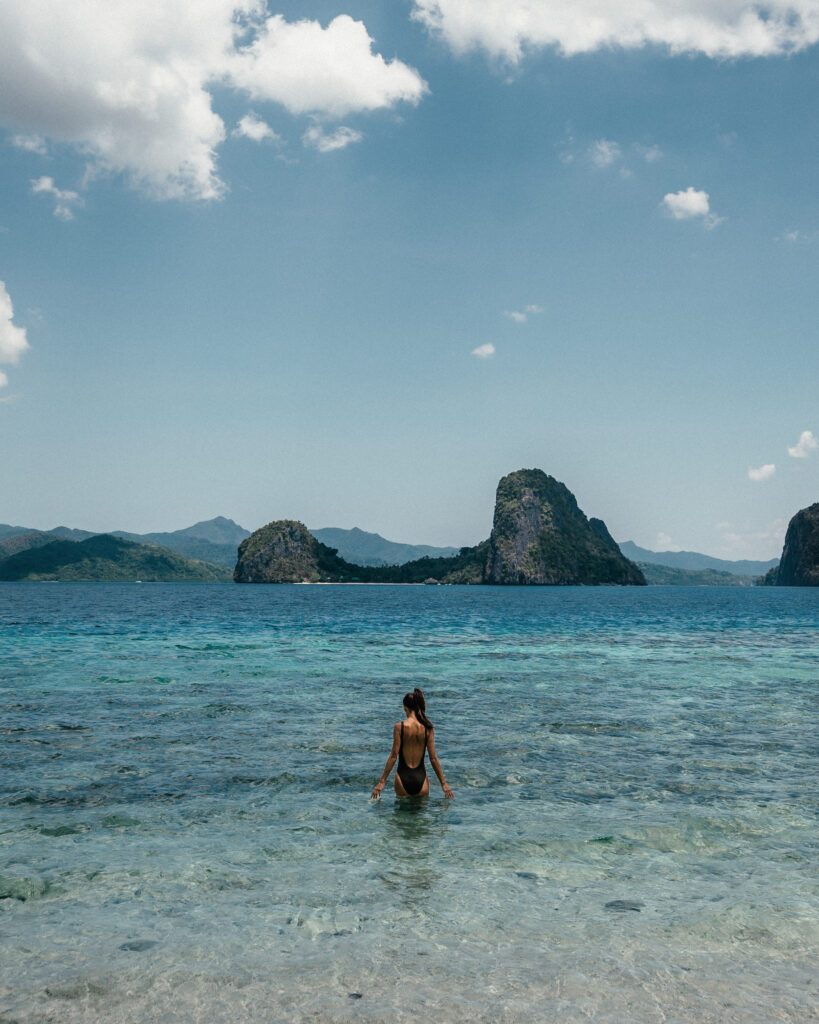
Island hopping.
EXPLORE EL NIDO
ISLAND HOPPING
Pack as many islands into your visit as possible, they are worth every penny you’ll spend on a boat trip. I opted to avoid the group tours that are sold all over El Nido. We arranged private day trips through a local tour agency. For both private and group tours, the agencies are pretty firm on the four universal itineraries that are offered – Tour A (Big Lagoon, Small Lagoon, Shimizu Island, Commando Beach and Secret Lagoon), Tour B (Snake Island, Pinagbuyutan Island, Entalula Beach and Cudugnon Cave), Tour C (Helicopter Island, Matinlon, Secret Beach, Hidden Beach and Star Beach) and Tour D (Ipil Beach, Cadlao Lagoon, Paradise Beach, Pasandigan Beach and Bukal Beach). They do not create custom tours that allow island samplings from each group.
Insist on starting your tour as early as possible. Dozens of boats leave from the same beach with all the tour guides trying to get their departure “paper work” approved at the same time. We were sitting there for at least an hour waiting – a complete waste of time.
The boat ride out through the islands is beautiful. The perk of hiring a private boat is that you can control a lot of the schedule. For example, when we arrived at Cadlao Lagoon there were two other boats anchored. We decided to hang out and wait for them to leave so that we could have the entire lagoon to ourselves. It completely changes the experience to be the only ones on an island, at a beach or in a lagoon.
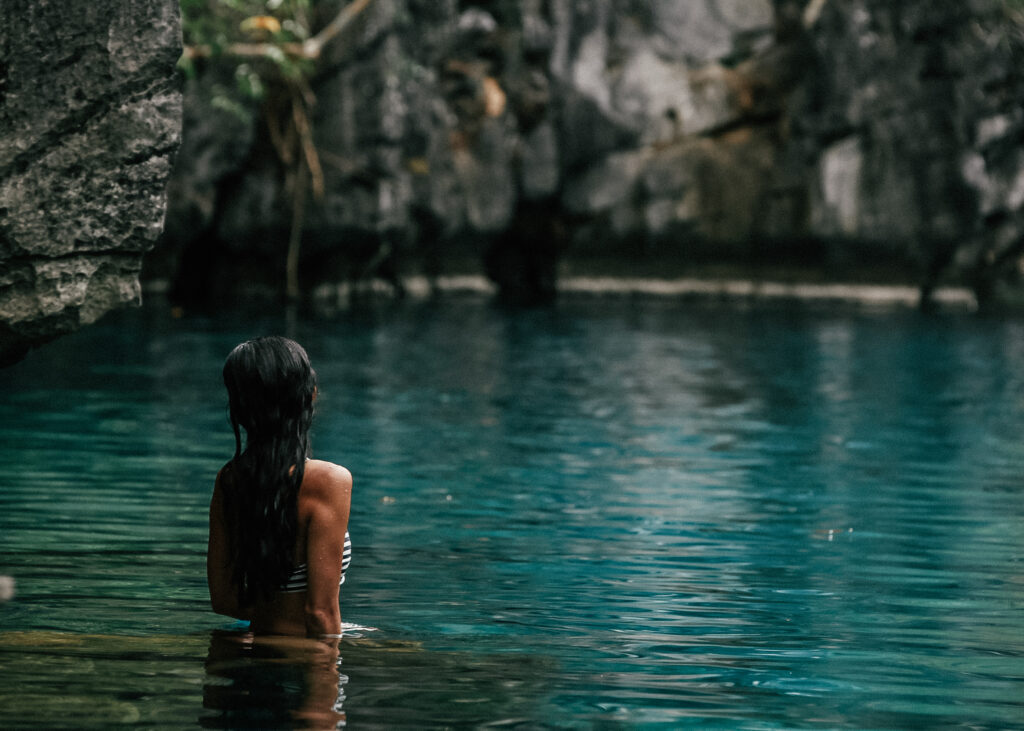
The water is so blue and clear in Palawan.
STAY IN EL NIDO
EL NIDO ISLAND RESORTS
For the upscale resort experience in otherwise rustic El Nido, Apulit Island, Miniloc Island, Lagen Island and Pangulasian Island make up the El Nido Resorts collection. The properties offer a five-star sustainable experience, as well as over-water cottages, private beaches and infinity pools in some pretty spectacular locations surrounding El Nido. Transport by van and boat can be arranged from the airport, through the resorts.
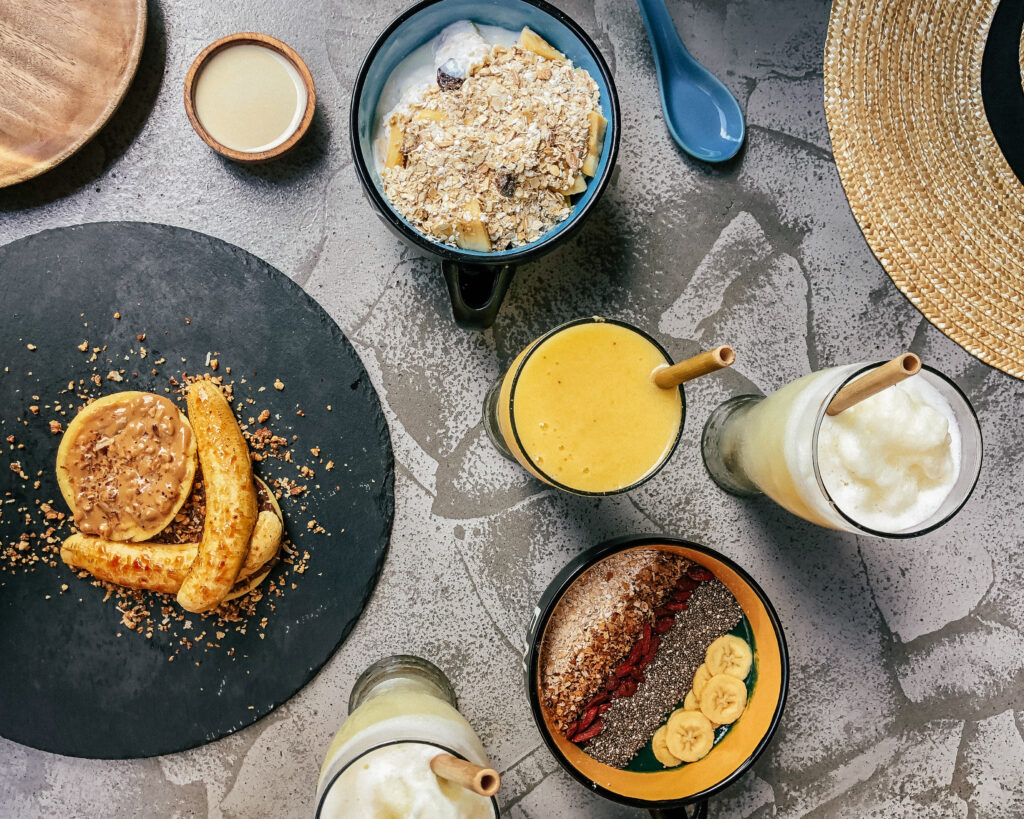
Fresh smoothies every morning in town.
GET TO AND AROUND EL NIDO
Motorized trike is the easiest way to zip around El Nido – the airport is a 20-minute drive from the center of town.
There are two ways to reach El Nido. Air Swift owns the local airport and offers a few flights daily. Prices are higher than other flights in The Philippines, but still affordable. The other option is to fly to Puerto Princesa, and from there book a group or private shuttle for a hair-raising six-hour drive up to El Nido.
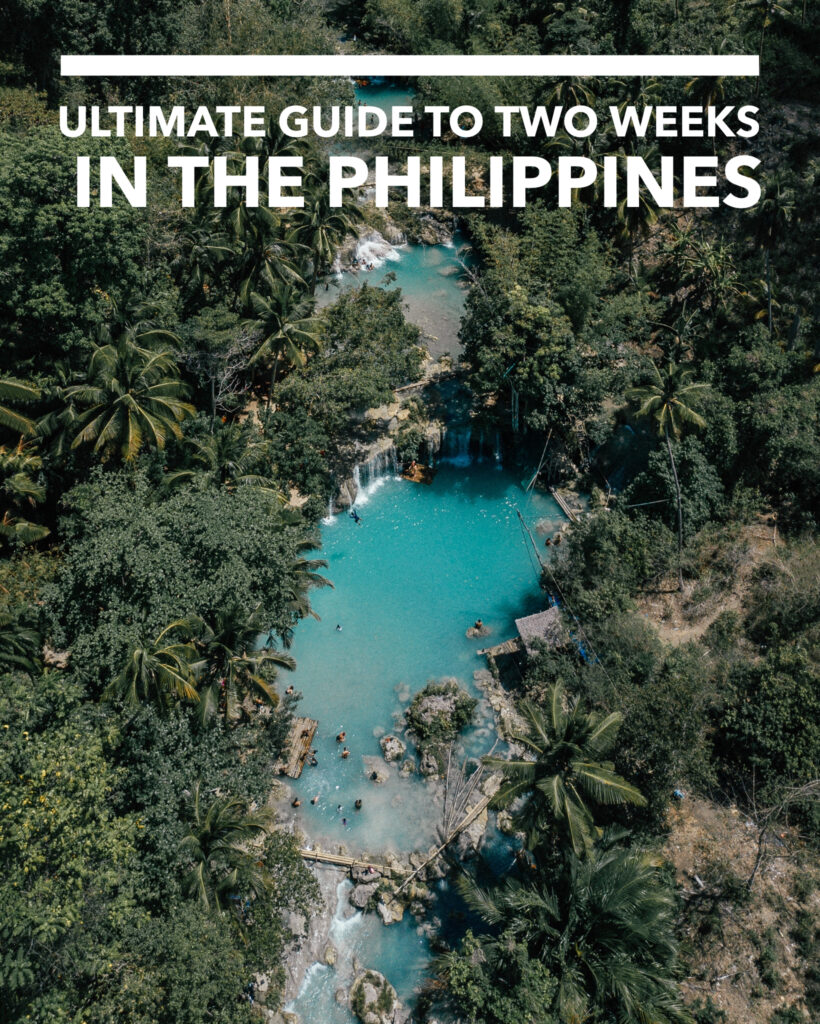
Can you recommend a private hire company for a transfer from Porto princess to el nido we are a group of 4 travelling in January
Loved this and super helpful for a trip I’m planned later this year
Absolutely loved this information, probably the most valuable that I’ve read so far! Thank you 😊
Wonderful and great information.
Really thrilled to read this itinerary.
We are planning 15 days back pack trip to Philippines, during February 2024.
Is it okay to tour Philippines during February?
We are budget travellers.
Can you suggest me some good Hostel for stay at Philippines please.
February is a great time to visit! I don’t have any hostel recommendations, I haven’t stayed at hostels in The Philippines. Maybe use TripAdvisor or Hostel World to source a few out!
Can you please tell me where is the picture taken in the sea with the star fishes? Is it Bohol?